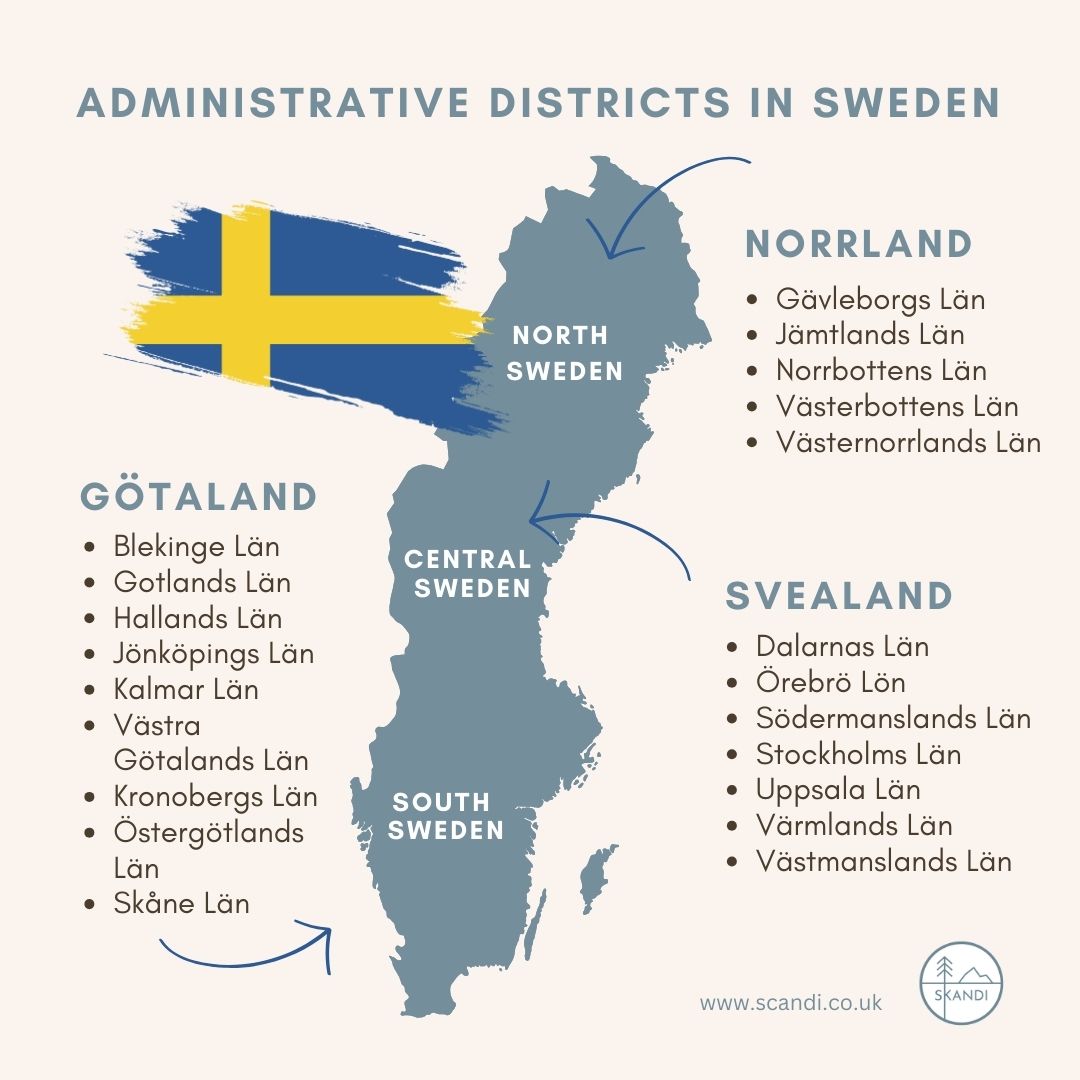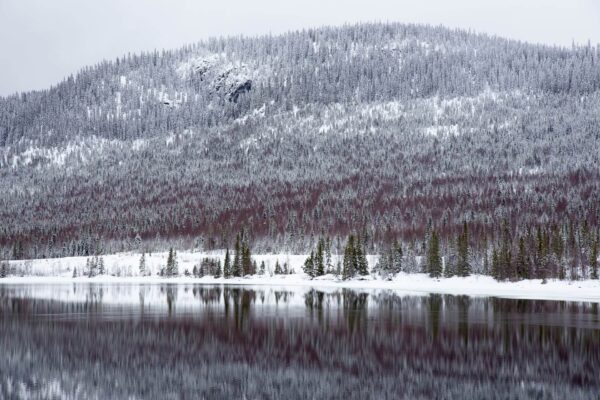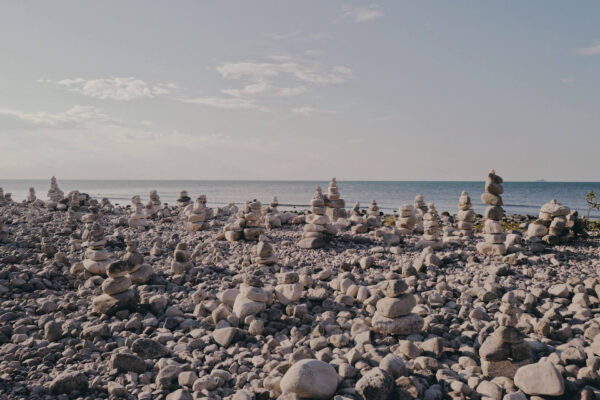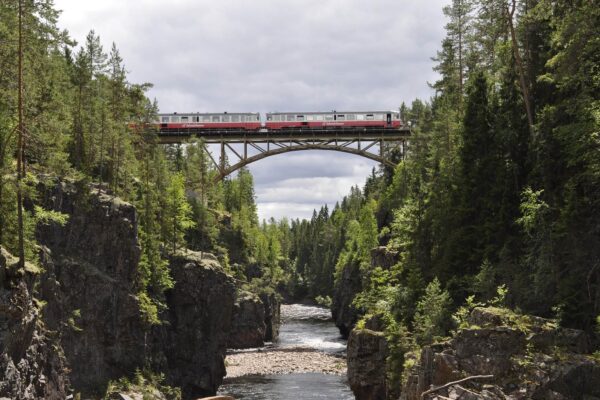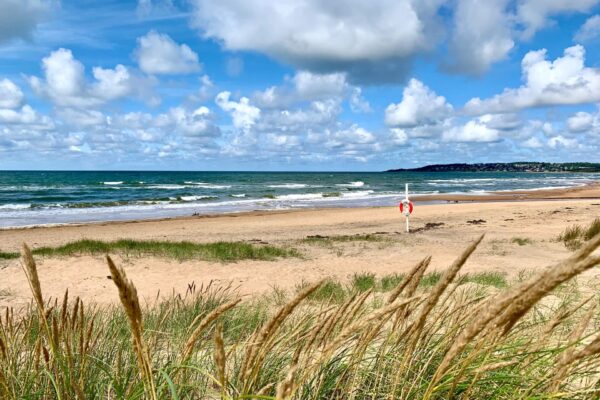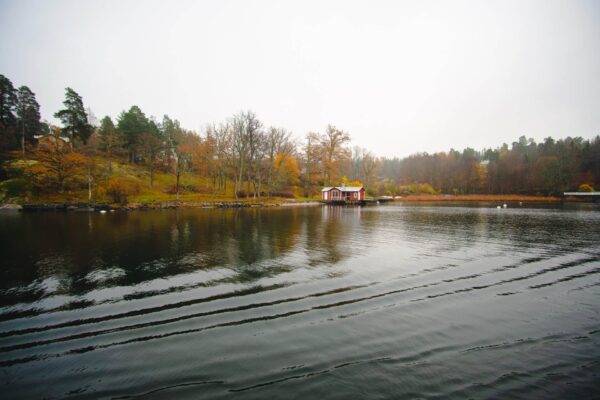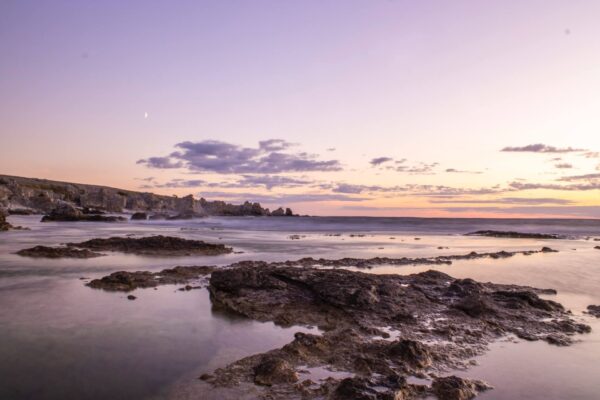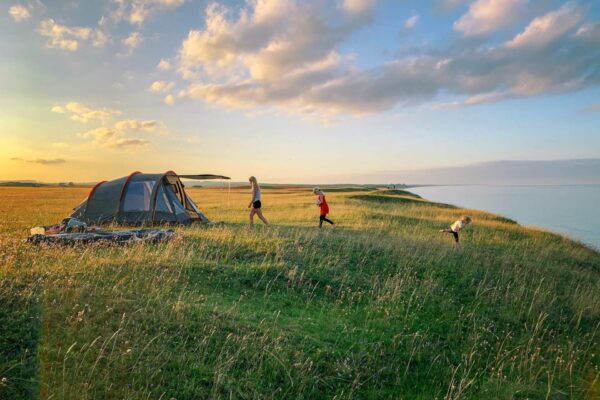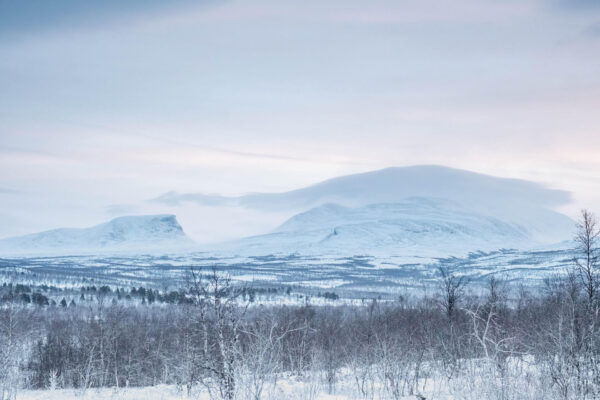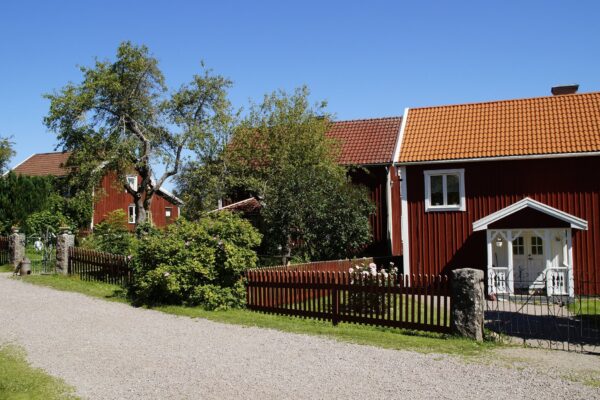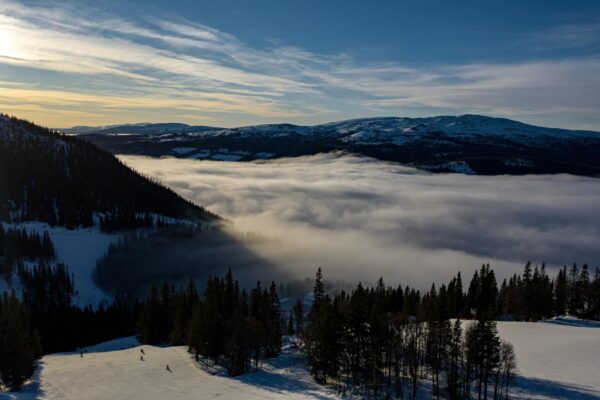If you want to find your way around Sweden geographically, the first overview of the individual regions appears somewhat complicated at first. Historical changes have led to different names and maps therefore seem to have different indications. What is meant by province or Swedish Län? This overview makes it easier to find your way around.
Interesting facts about Sweden
Sweden has an area of 447,435 square kilometres and a population of around 10.4 million, which means that there are only around 23 inhabitants per square kilometre (for comparison: in Germany there are around 223 people per square kilometre). In addition to the capital Stockholm, other major cities in the country are Gothenburg, Malmö, Uppsala, Västerås, Örebro, Linköping and Helsingborg.
Despite its northern location, the climate in Sweden is quite mild. In most places, there is little difference in temperature between summer and winter. However, it rains a lot in Sweden and it rarely gets very hot in summer. A polar climate only occurs in the northern high mountains.
The country’s location also means that it gets dark very early in winter and stays light for a very long time in summer – the so-called midnight sun. However, this means that you have the opportunity to see the Northern Lights in the upper north of Swedish Lapland.
Sweden’s three regions
To get an overview of Sweden’s regions, the country is roughly divided into three large regions:
Norrland / Northern Sweden
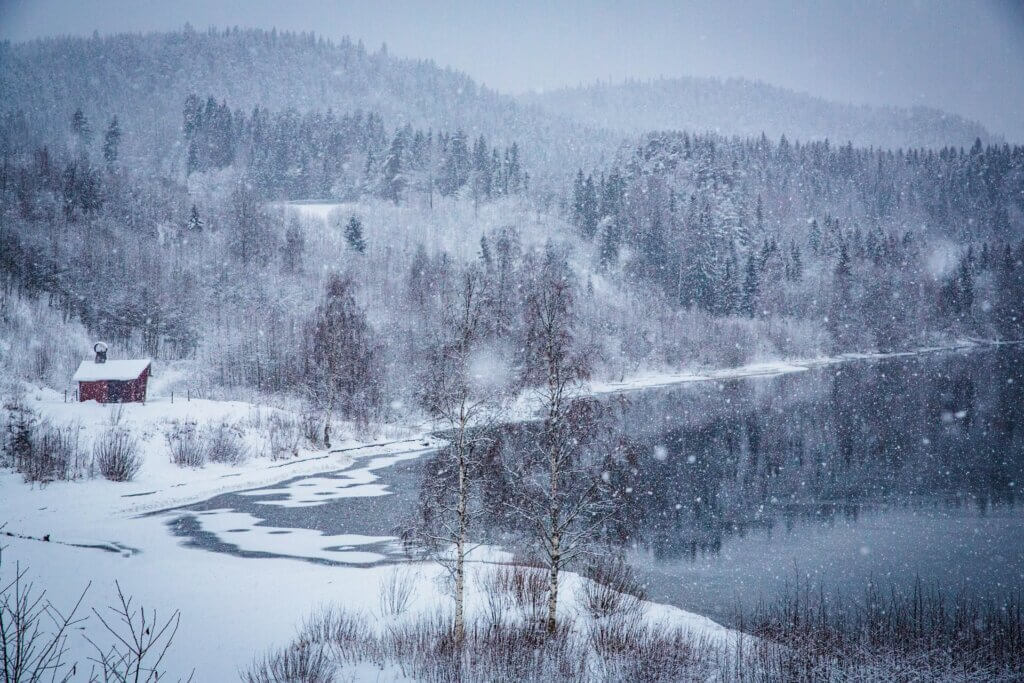
Overall, there is a lot of nature in all three regions, but the north is particularly sparsely populated. Nevertheless, Norrland or Northern Sweden covers more than half the area of the entire country. It comprises nine provinces or “landscapes”. Norrland is best known for its unspoilt wilderness.
Popular destinations here include the cities of Umeå, Kiruna and Sundsvall, the High Coast in the province of Ångermanland in north-east Sweden, which is a UNESCO World Heritage Site, and the whole of Swedish Lapland, which is particularly cold in winter and usually covered in snow.
Svealand / Central Sweden
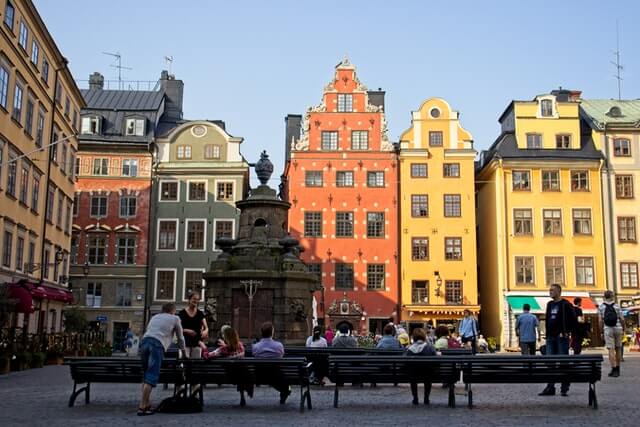
Southern and central Sweden are mainly characterised by agriculture and offer plenty of green nature, but also the three more densely populated metropolitan regions. Sweden’s capital Stockholm is located in central Sweden and is the most popular destination for holidaymakers. But the surrounding regions also have a lot to offer.
The small city of Uppsala, for example, is known as a Viking site and a cosy university town. And the Dalarna region, for example, is considered a typical showcase of Sweden, with its Falun red wooden houses by blue lakes and deep forests.
Götaland / Southern Sweden
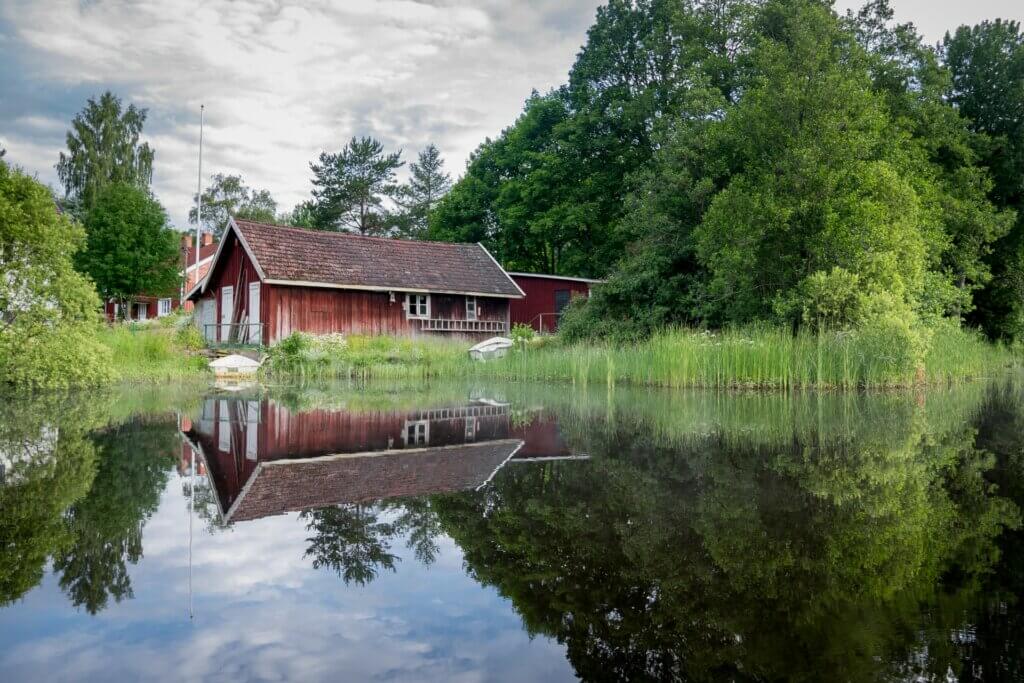
Götaland, or southern Sweden, comprises the two metropolitan regions of Gothenburg and Malmö, which have a lot to offer. But the region of Småland (which translates as “little country”), which brings back childhood memories of Emil from Lönneberga, Bullerbü and the like, is also located in the south. You can swim on the beaches in southern Sweden, go hiking in the countryside or paddle on the water. The Skåne region is known as the country’s breadbasket.
Astrid Lindgren‘s native Småland is probably the best-known region of southern Sweden to this day. But Skåne, Blekinge, Gotland, Öland and Halland are also worth a visit.
Today, the three large parts of Sweden play a rather subordinate role, as they have no political or administrative function. For holidaymakers, however, they provide an initial orientation as to which part of the country they are in.
The historical provinces (Landskap)
The term “provinces” is often used in connection with Sweden’s geographical division, especially in the tourist sector. However, it is not always entirely clear what is meant by this. In Swedish, the distinction is clearer with the terms Landskap, which translates as “landscape”, and Län. The landscapes are also known as historical provinces. There are 25 landscapes in total.
On this map you will find an overview of these, divided into the three parts of the country: North, Centre and South.
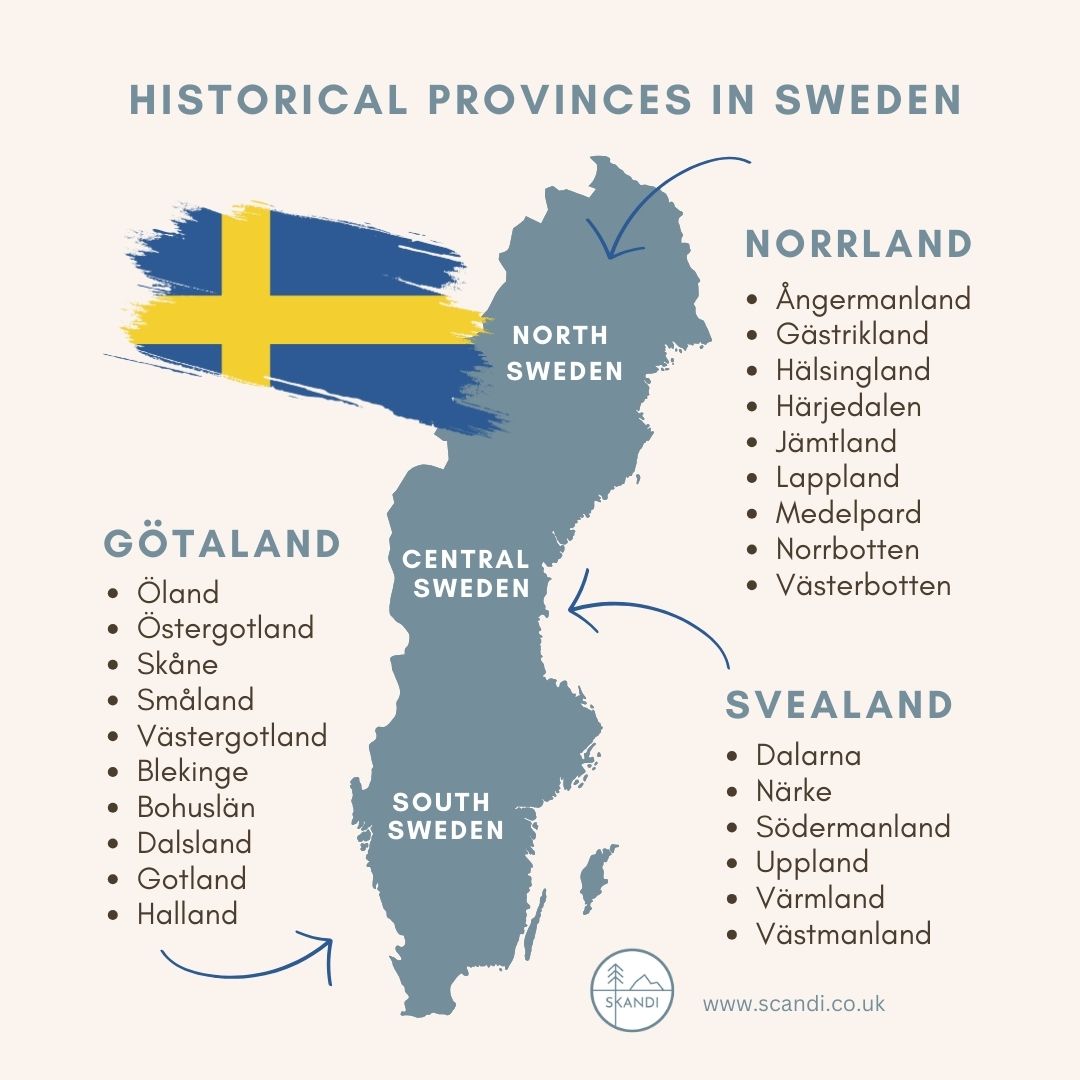
Even though they are politically unimportant, the historical provinces still have an important cultural significance for Swedes today, who identify strongly with their respective province. They emerged in the Middle Ages as independent political jurisdictions, but were abolished in the 14th century. Nevertheless, Swedish dialects, costumes and customs can still be traced back to them.
Tourism is also based on the provinces in advertising and information, so that they are known as Sweden’s holiday regions. If you enquire about Sweden with a travel agent, you will probably find the historical provinces.
The counties (Län)
Today’s administrative districts are called Län in Sweden. Some of them are also called provinces and some of them have the same name as the former provinces (e.g. Skåne and Dalarna), so it is not always clear which part of the country is meant. There are 21 counties, each of which has a provincial government and a capital city. Accordingly, these are roughly comparable to the German federal states.
